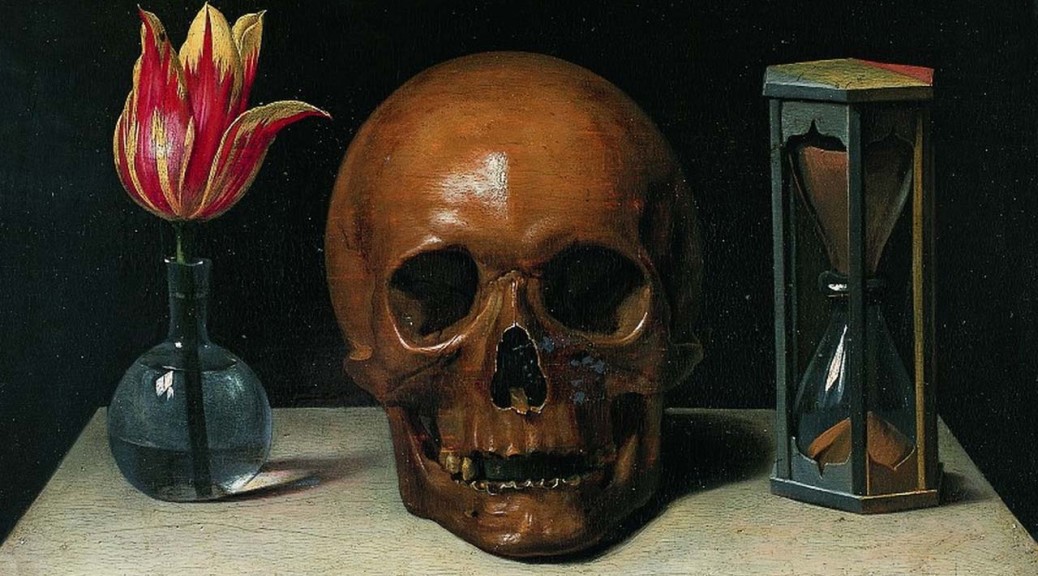
Et in Arcadia Ego. Guercino. 1618-22. Galleria Nazionale d’Arte Antica, Rome. Via wikimedia.
A memento mori at 3:38.

Nicholas Poussin, Et in Arcadia Ego, 1627. via wikipedia.
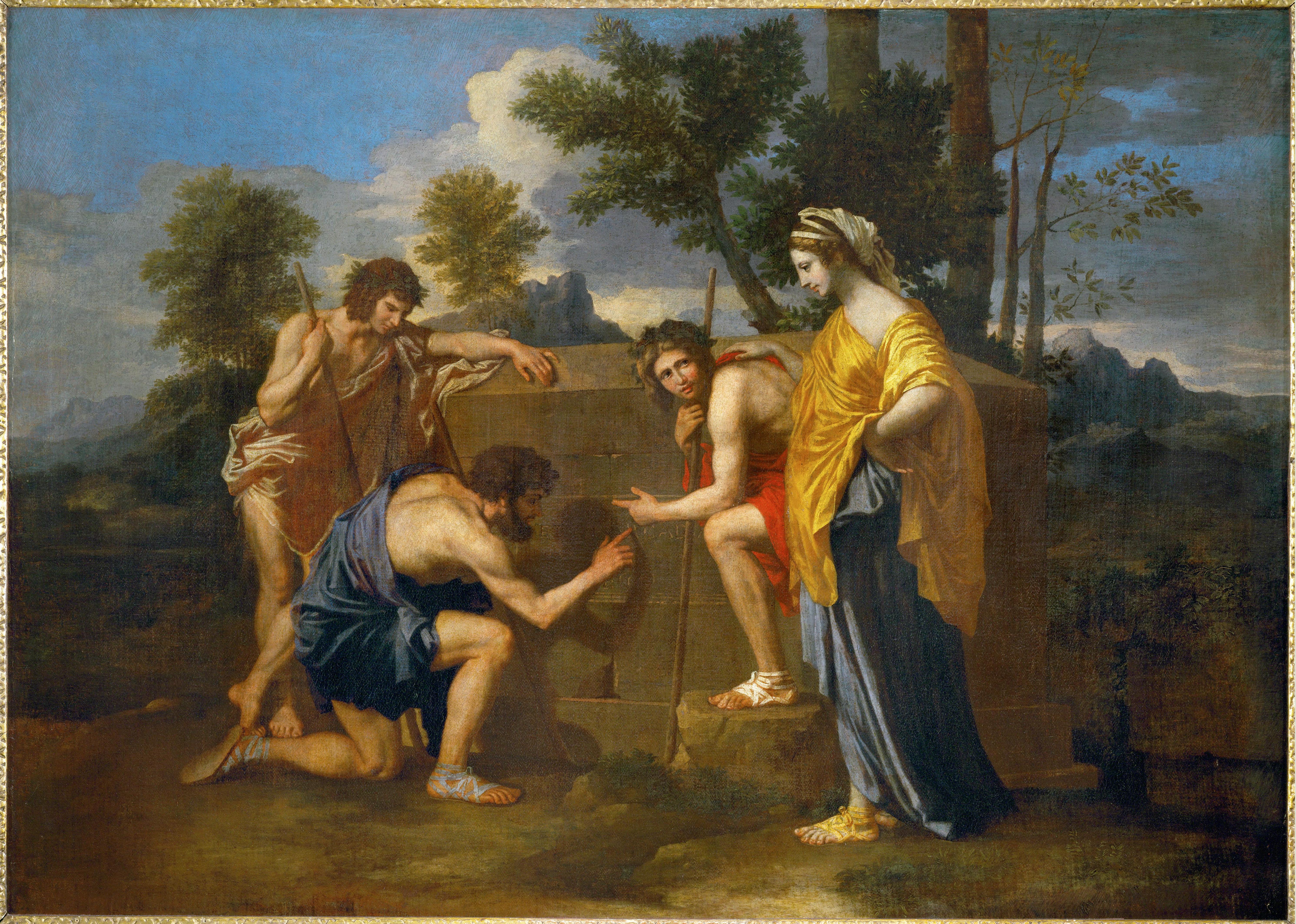
Nicolas Poussin. Et in Arcadia ego (1637-1638). Via wikimedia.
Interpretation of the phrase and paintings:
“The most important difference between the two versions is that in the latter version, one of the two shepherds recognizes the shadow of his companion on the tomb and circumscribes the silhouette with his finger. According to an ancient tradition (see Pliny the Elder, nat. Hist. XXXV 5, 15), this is the moment in which the art of painting is first discovered. Thus, the shepherd’s shadow is the first image in art history. But the shadow on the tomb is also a symbol of death (in the first version symbolized by a skull on the top of the tomb). The meaning of this highly intricate composition seems to be that, from prehistory onward, the discovery of art has been the creative response of humankind to the shocking discovery of mortality. Thus, death’s claim to rule even Arcadia is challenged by art […] In the face of death, art’s duty—indeed, her raison d’être—is to recall absent loved ones, console anxieties, evoke and reconcile conflicting emotions, surmount isolation, and facilitate the expression of the unutterable.” * Wikipedia.
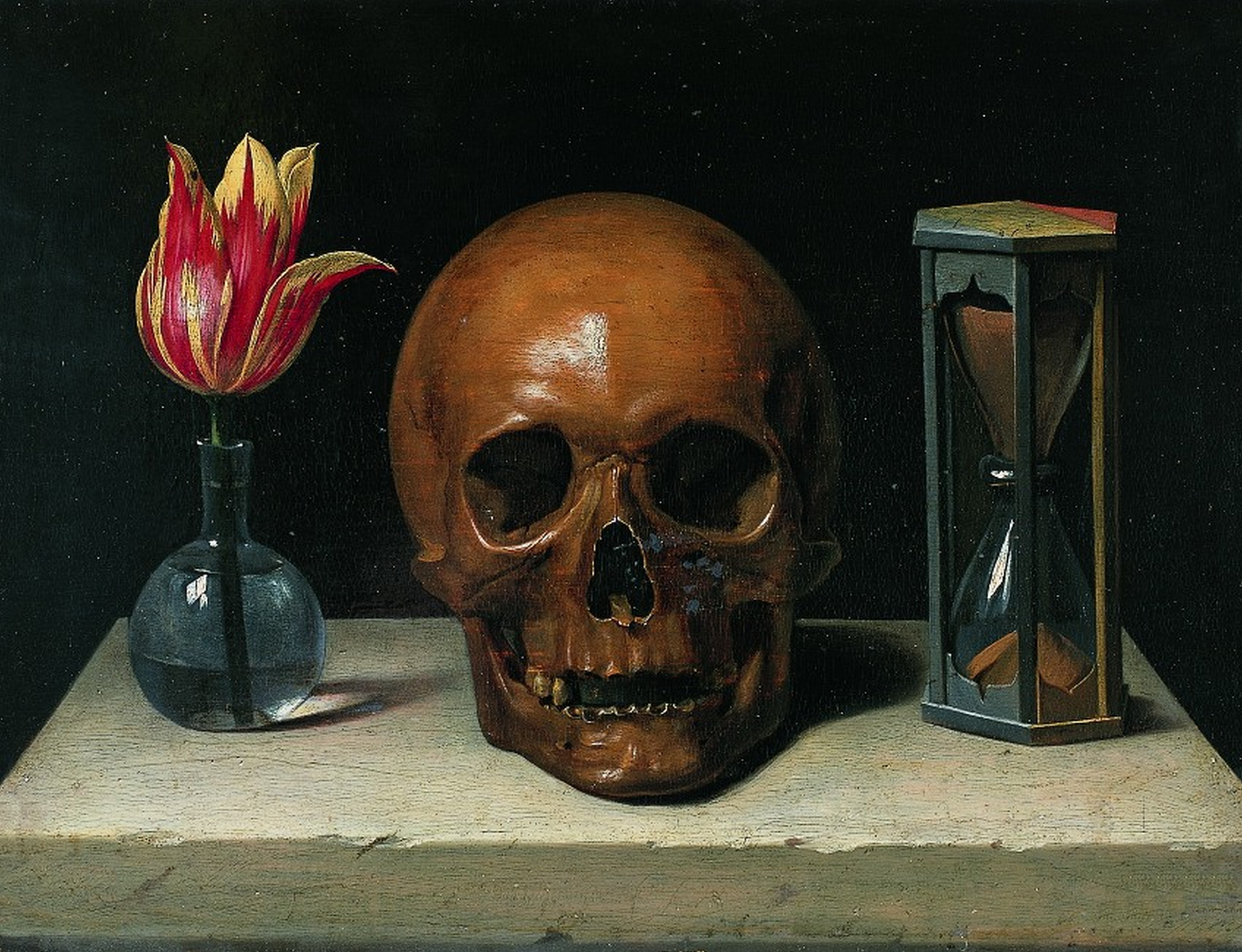
Philippe de Champaigne. Vanitas (c. 1671) Life, Death, and Time.
See memento mori and vanitas.
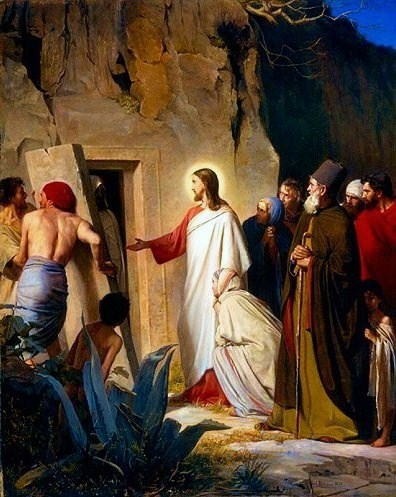
Raising Lazarus, Oil on Copper Plate, 1875, Carl Heinrich Bloch. Via wikimedia.
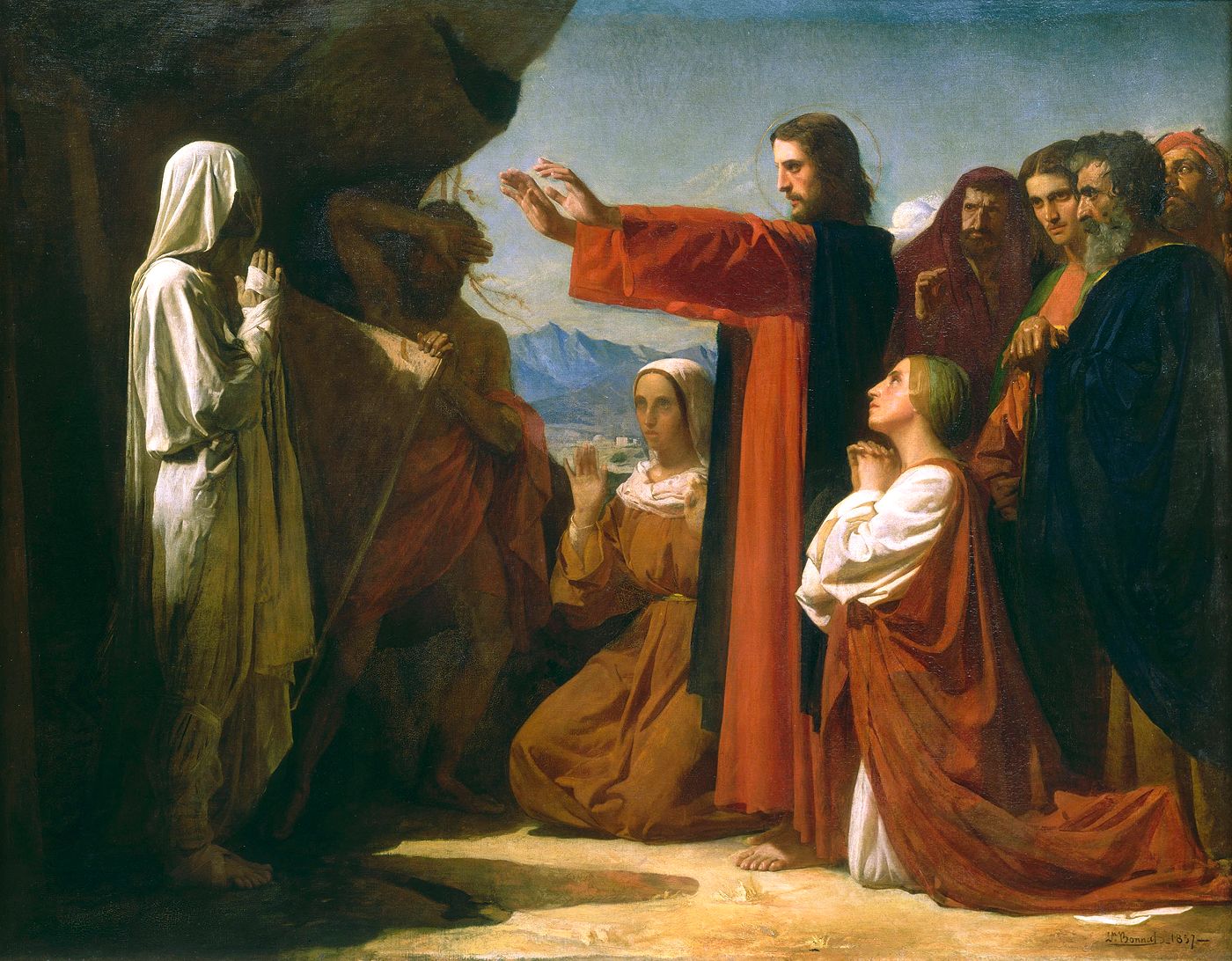
The Raising of Lazarus, 1857, Léon Joseph Florentin Bonnat. Via wikimedia.
See Ecologues of Virgil.
See Erwin Panofsky
See Web Gallery of Art.
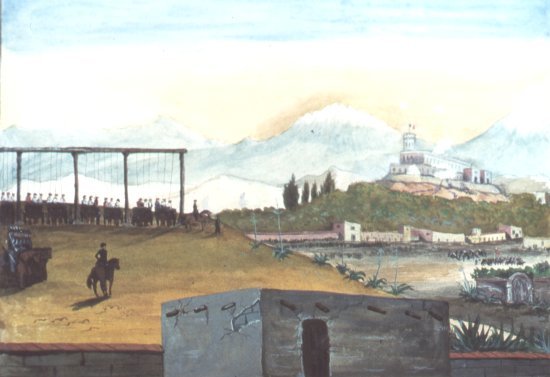
The mass hanging of San Patricios via wikimedia.
Read Samuel Chamberlain‘s My Confession: Recollections of a Rogue.
—–
Et In Arcadia Ego is the name the Judge has given to his rifle in Blood Meridian. In the book, the Judge copies and destroys an ancient rock painting he finds while crossing the desert.
——
On the origin of painting and drawing through shadow. Blog.
——
*the source of the interpretation doesn’t appear in Wikipedia unless it comes from the German book Picasso und die christliche Ikonographie. Mutterbeziehung und künstliches Selbstverständnis (2003) by . (Picasso and the Christian iconography. Mother relationship and artificial self-image).
